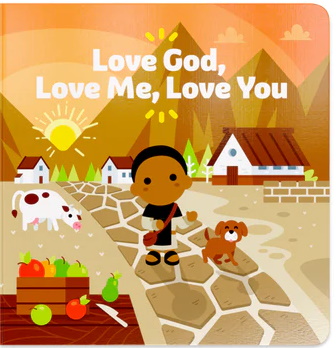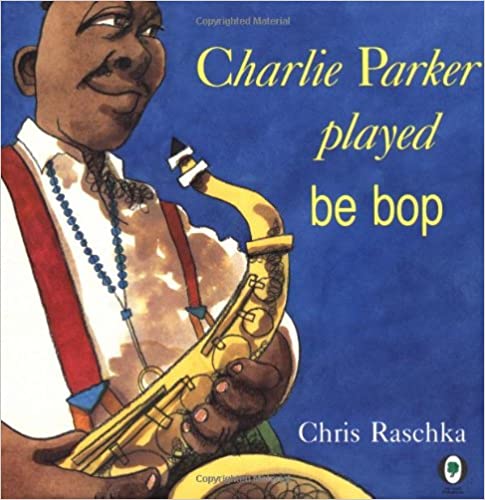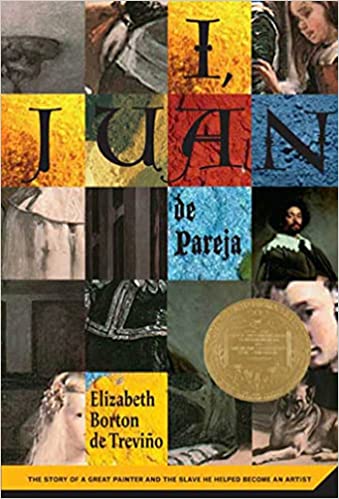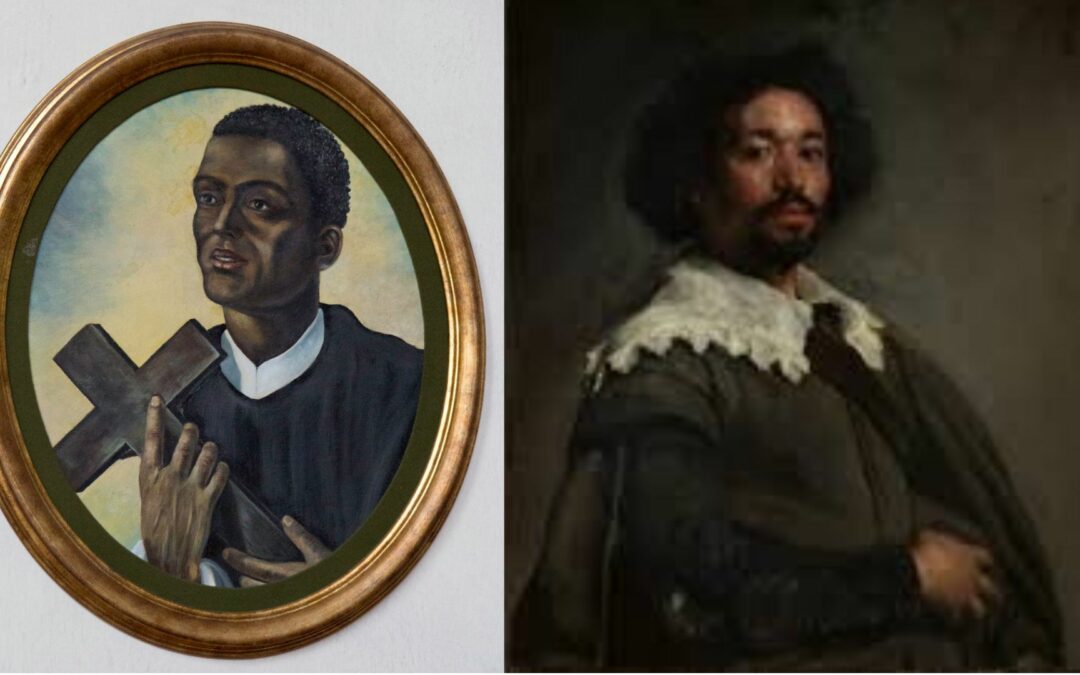Book Reviews for Black History Month: Catholic Homeschooling
All this month I am reviewing books related to themes of black history. Today I review three children’s books, each with a different audience and vastly different themes: Love God, Love Me, Love You by Joe Klinker, Charlie Parker Played Be Bop by Chris Raschka, and I, Juan Pareda by Elizabeth Borton de Trevino.
Love God, Love Me, Love You by Joe Klinker and Manuel Corsi
 Love God, Love Me, Love You by Joe Klinker and illustrator Manuel Corsi (OSV/Tiny Saints, 2019) is a children’s board book about St. Martin de Porres, the famous Dominican tertiary of Peru.
Love God, Love Me, Love You by Joe Klinker and illustrator Manuel Corsi (OSV/Tiny Saints, 2019) is a children’s board book about St. Martin de Porres, the famous Dominican tertiary of Peru.
St. Martin de Porres (1579-1639) was one of the first saints of the New World and the first African American saint. Though not a slave, St. Martin was born of a black freedwoman who had been the slave of his father, a Spanish nobleman. St. Martin was a lay brother in the Dominican monastery of Lima where he became renowned for his sanctity.
Love God, Love Me, Love You focuses on the heart of St. Martin’s spirituality, which was a humble and sincere observance of the Two Greatest Commandments. It presents St. Martin’s virtues as a “daily checklist” he observes in all his interactions with people and animals. Manuel Corsi’s illustrations are vibrant and endearing, ideal for its target audience.
One thing to note is that the book only reference to St. Martin de Porres, and that he is the hero of this story, is in the back cover blurb. The text itself focuses entirely on the Two Greatest Commandments. Obviously a children’s board book isn’t going to have exceptional detail but there is no “My name is Martin and I am a Dominican.” Therefore, I recommend learning some biographical info about St. Martin yourself before reading this book aloud so you can also share his holy live with your children.
Love God, Love ME, Love You is part of the Tiny Saints line of products, which caters mostly to the very young. Tiny Saints makes fun toddler-oriented products such as charms, rosaries, and board books. If you’d like to find more products that include saints from all parts of the world, Tiny Saints is an excellent resource for you.
Charlie Parker Played Be Bop by Christ Raschka
 Charlie Parker (1920-1955) was an influential saxophonist of America’s golden age of jazz. Parker was a virtuouso who is widely considered to be the inventor of the jazz style known as bebop. Jazz, of course, was an extremely vibrant outlet of African American subculture during the latter years of segregation, with renowned jazz artists doubling as icons of the black community in general.
Charlie Parker (1920-1955) was an influential saxophonist of America’s golden age of jazz. Parker was a virtuouso who is widely considered to be the inventor of the jazz style known as bebop. Jazz, of course, was an extremely vibrant outlet of African American subculture during the latter years of segregation, with renowned jazz artists doubling as icons of the black community in general.
In Charlie Parker Played Be Bop (Scholastic, 1992), author and illustrator Chris Raschka attempts the monumental task of capturing the raw energy of Parker’s bebop in children’s book form. The book itself is quite short and can be read in five minutes. Illustrated in watercolor with pastel accents, the colorful images alternate between pictures of Parker and other images evocative of the bebop sound, such as birds in flight or shoes dancing.
Charlie Parker Played Be Bop has no narrative structure so to speak of. It does not attempt to tell a story. Its purpose is to capture the rhythm and energy of bebop through art. Sometimes the words consist of jazz words like “be bop…boomba boomba…fisk fisk”; sometimes they are descriptive captions like “Charlie Parker played the saxophone.”
When I did my first read through of this book, I was profoundly annoyed by it, as it seemed like a “nonsense” book of gibberish. However, I noticed from reviews that many, many people love this book. So, I decided to try listening to Charlie Parker’s music first. Not being much of a jazz aficionado, this was outside the box for me. After listening to some of his classic bebop tracks, I got a better appreciation for what Chris Raschka is doing with this book. The text itself has a rhythm to it. Reading it is very much like listening to an upbeat jazz song—a swift assault of notes and movement that is musically complex even if it is not understood.
Charlie Parker Plays Be Bop may not to appeal to all audiences. However, kinesthetic learners who thrive on sounds and movement will especially enjoy the raw physicality of Raschka’s jazz descriptors. Familiarity with Parker’s bebop certainly helps put one in the right mind to read this as well. And, if you find you love this book, check out Raschka’s John Coltrane’s Giant Steps from the library!
I, Juan de Pareja by Elizabeth Borton de Trevino
 The final book I will be reviewing today is for older children. At 180 pages and fifteen chapters, it is probably suitable for ages 10 to 13. I, Juan de Pareja by Elizabeth Borton de Trevino (MacMillan) is an older book, first published in 1965. It was an immediate hit, winning the Newberry Medal in 1966, and has retained its popularity over the years. I, Juan de Pareja is loosely based on the true life tale of Juan de Pareja, a slave in the household of the Baroque painted Diego Velasquez.
The final book I will be reviewing today is for older children. At 180 pages and fifteen chapters, it is probably suitable for ages 10 to 13. I, Juan de Pareja by Elizabeth Borton de Trevino (MacMillan) is an older book, first published in 1965. It was an immediate hit, winning the Newberry Medal in 1966, and has retained its popularity over the years. I, Juan de Pareja is loosely based on the true life tale of Juan de Pareja, a slave in the household of the Baroque painted Diego Velasquez.
The details of Pareja’s life are sparse—he appears in legal documents as a witness for Velasquez in the 1640s, worked in the famous painter’s worshop, and was granted his freedom in 1650. Pareja worked as an independent painter in Italy for the next decade until his death.
Elizabeth de Trevino fills in the details of this history with a fictionalized account of the relationship between Juan and Velasquez. When Juan’s master and mistress die in a plague in Madrid, he is inherited by Velasquez, a relative of Juan’s owners. Juan, already praised for his steady hand at letters by his mistress, is taken under the wing of the great artist and taught the art of painting. The friendship between slave and master overcomes many challenges in a story that highlights both the beauty and the cruelty of the age.
What really makes this book work is Elizabeth de Trevino’s engaging writing style. It is lucid but terse; her sentences are constructed with a descriptive but calculated brevity. It feels like the kind of writing where every single word was chosen with deliberateness. She is a master at the craft, producing a book that is a delight to read, not merely because of the story, but because her use of the language itself is masterful. I highly recommend this book—and not merely in the context of Black History Month or education about slavery, but merely as a fantastic piece of children’s literature.
Would you like to create a unit study on the topic of Catholic Black History Month? Heart of a Mother offers a nice, easy one here: Celebration Time: Catholic Black History Month Unit Study.
As an Amazon Associate I earn from qualifying purchases.






